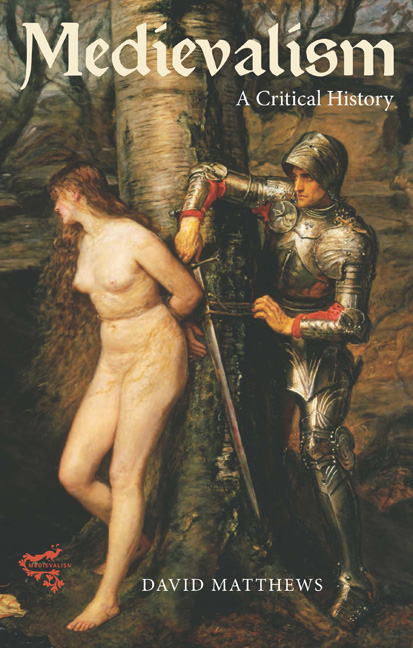Book contents
- Frontmatter
- Dedication
- Contents
- List of Illustrations
- Preface
- Acknowledgements
- Abbreviations
- Introduction
- I TAXONOMIES
- II TIME, SPACE, SELF, SOCIETY
- 2 “Welcome to the Current Middle Ages”: Asynchronous Medievalism
- 3 This Way to the Middle Ages: The Spaces of Medievalism
- 4 On Being Medieval: Medievalist Selves and Societies
- III HISTORY AND DISCIPLINE
- Conclusion Against a Synthesis: Medievalism, Cultural Studies, and Antidisciplinarity
- Afterword
- Appendix I The Survey of Reenactors
- Appendix II Key Moments in Medievalism
- Bibliography
- Index
2 - “Welcome to the Current Middle Ages”: Asynchronous Medievalism
from II - TIME, SPACE, SELF, SOCIETY
- Frontmatter
- Dedication
- Contents
- List of Illustrations
- Preface
- Acknowledgements
- Abbreviations
- Introduction
- I TAXONOMIES
- II TIME, SPACE, SELF, SOCIETY
- 2 “Welcome to the Current Middle Ages”: Asynchronous Medievalism
- 3 This Way to the Middle Ages: The Spaces of Medievalism
- 4 On Being Medieval: Medievalist Selves and Societies
- III HISTORY AND DISCIPLINE
- Conclusion Against a Synthesis: Medievalism, Cultural Studies, and Antidisciplinarity
- Afterword
- Appendix I The Survey of Reenactors
- Appendix II Key Moments in Medievalism
- Bibliography
- Index
Summary
Shekhar Kapoor's 2007 film, Elizabeth: The Golden Age, sequel to 1998's Elizabeth with Cate Blanchett again in the title role, depicts the middle years of the Tudor queen's reign up until the defeat of the Spanish Armada in 1588. Continuing the central drama of the earlier film, it traces the virgin queen's establishment of her legitimacy as a woman on the throne. At the same time, in a scarcely less obvious way, the narrative is a triumphal drama of the forging of a Protestant nation, breaking free from and defining itself against a Catholic past of superstition and oppressive masculinity. As it builds towards the Spanish king's invasion of England the film shuttles between its English and Spanish settings, in scenes in which it becomes increasingly clear that Elizabeth inhabits a light-filled realm of incipiently renascent splendour. She receives emissaries in her luminous palace of Whitehall (in scenes shot in the cathedral of Ely with its massive lantern tower). In corresponding scenes set in Spain (shot in some of the darker corners of Westminster Abbey), her adversaries are depicted in shadows, attired in dark cloaks, showing us that the obscurity of their own inner ignorance moves with them. Ultimately, of course, the pernicious Armada, leading the forces of superstitious darkness, is defeated by a nation that is thereby left free to pursue its own destiny as an enlightened place which, among many other things, lets a woman remain on the throne.
The condition of the film's overt feminist promise, however, is the extirpation of the ignorant medieval past. The film thereby plays out a version of precisely the way in which sixteenth-century England itself portrayed the superstitious past. I have already, in the introduction, revisited the history through which the British Middle Ages was invented in the sixteenth century and conceived of, first as a dark time and then as a middle time (intervening between the classical and the “modern” sixteenth century). As I showed, these two ideas were effortlessly conflated: middleness became darkness, and vice versa.
- Type
- Chapter
- Information
- MedievalismA Critical History, pp. 45 - 64Publisher: Boydell & BrewerPrint publication year: 2015

